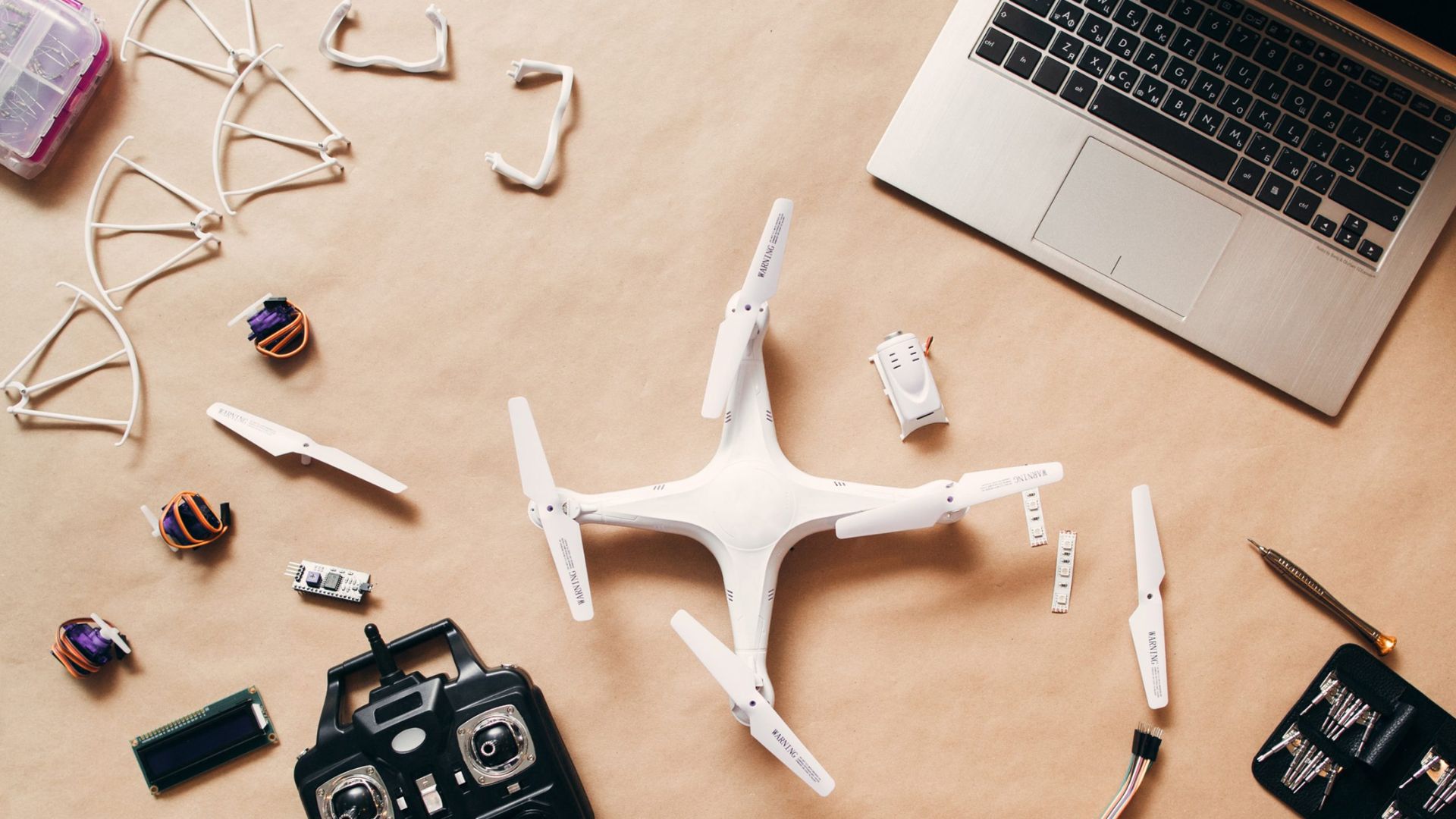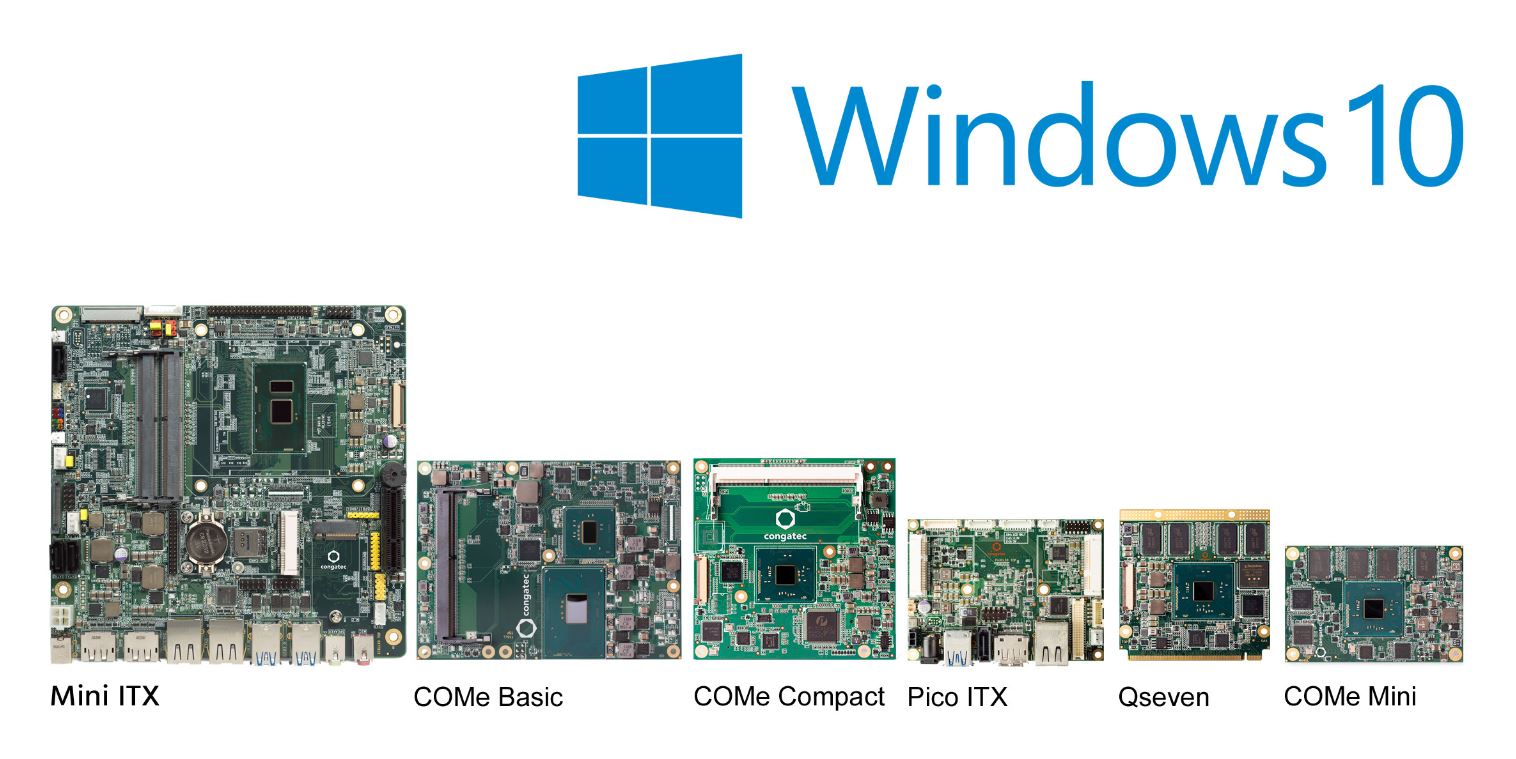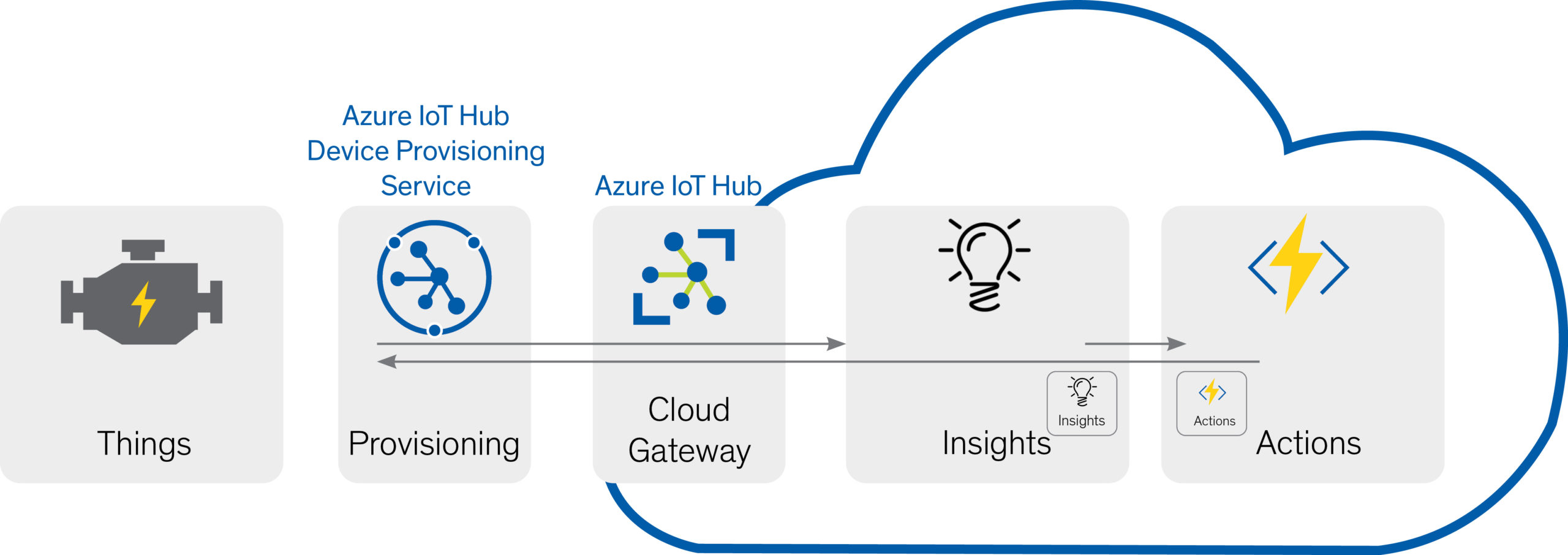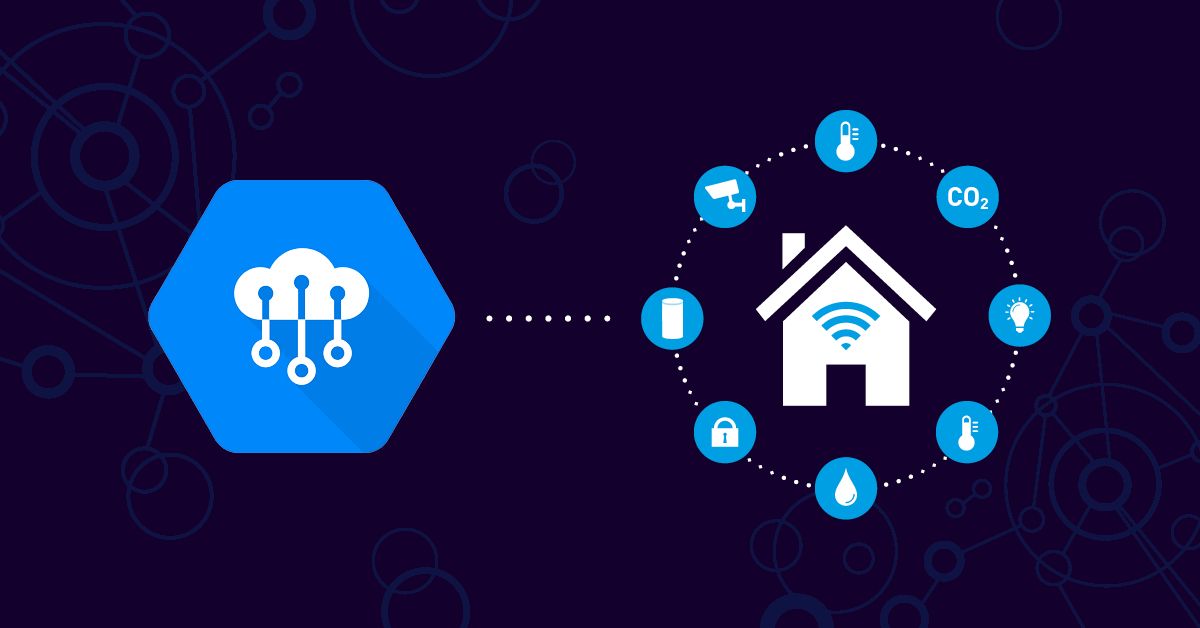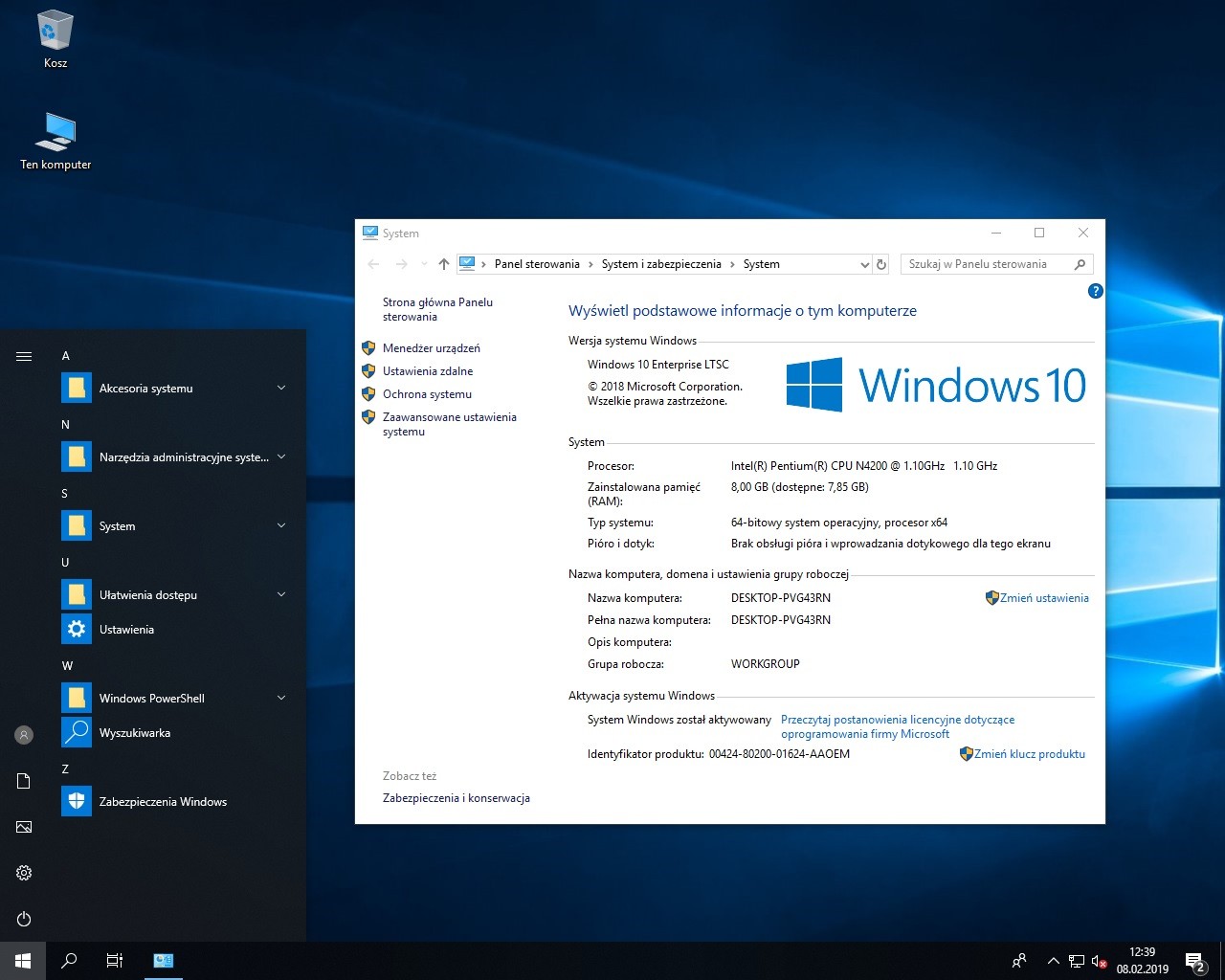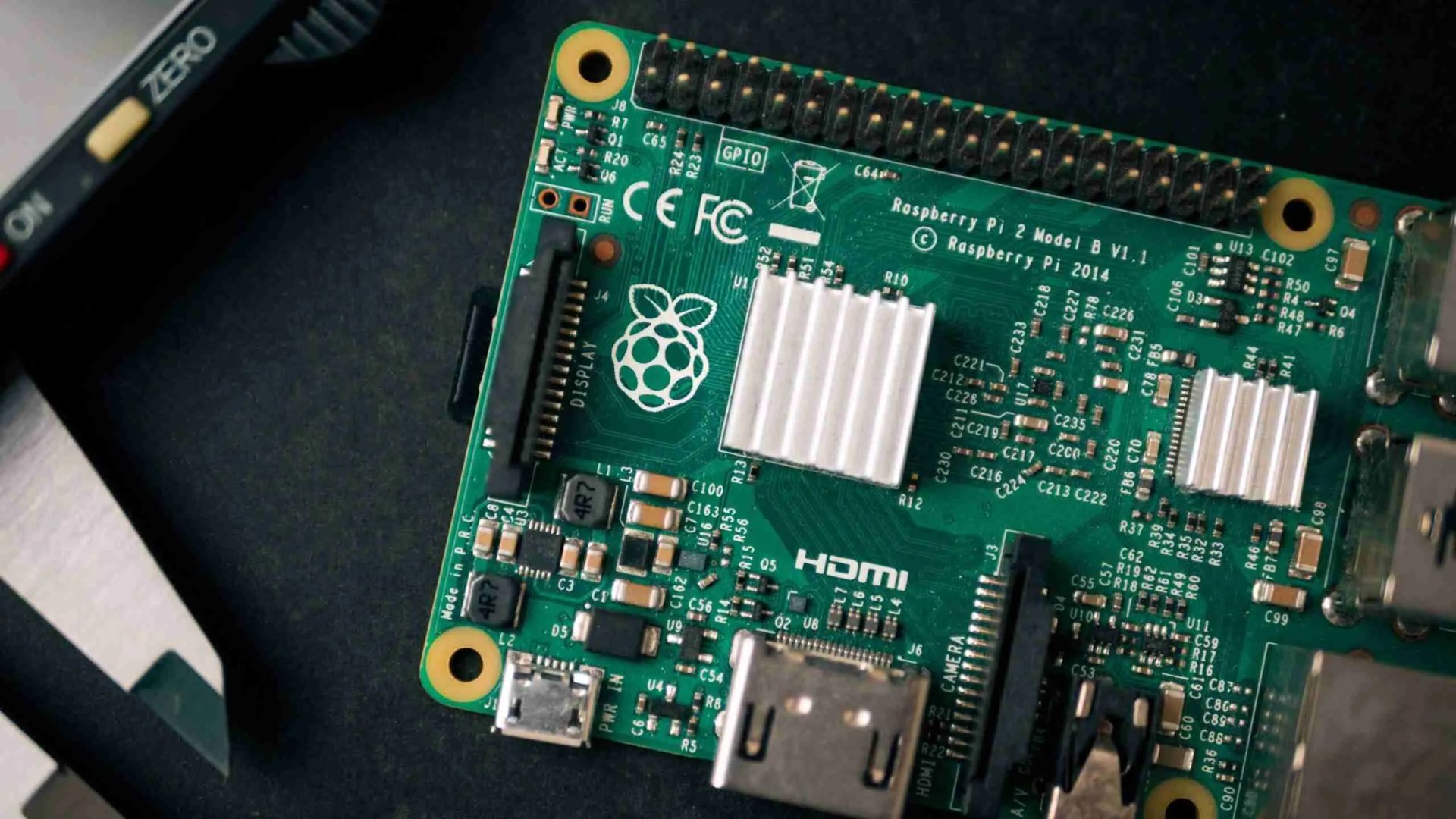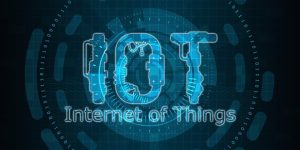Introduction
Welcome to the exciting world of IoT devices! In today’s tech-driven era, the demand for smart interconnected devices has skyrocketed. From smart homes to industrial automation, IoT devices have become an integral part of our daily lives, transforming the way we interact with technology.
IoT, short for Internet of Things, refers to a network of physical devices embedded with sensors, software, and connectivity capabilities that allow them to exchange data and communicate with each other over the internet. These devices can range from simple sensors and actuators to complex systems that control and monitor various aspects of our environment.
The possibilities with IoT devices are endless. You can create a device that monitors the temperature in your home and adjusts the thermostat accordingly, or develop a smart garden irrigation system that automatically waters your plants based on weather conditions. With IoT, you have the power to make your life more convenient, efficient, and automated.
However, building an IoT device can seem daunting, especially if you’re new to the world of programming and electronics. Fear not! This comprehensive guide will walk you through the essential steps of creating your very own IoT device from scratch.
Throughout this article, we will cover the key aspects of building an IoT device, including understanding the fundamentals of IoT, planning for your device, choosing the right hardware components, setting up your development environment, writing the necessary code, connecting it to the internet, securing it from potential threats, testing and deploying your device, and troubleshooting common issues.
By the end of this guide, you’ll have a solid understanding of how to build your own IoT device and be ready to embark on your IoT journey. So, let’s dive in and explore the fascinating world of IoT devices together!
Understanding IoT Devices
Before diving into the process of building an IoT device, it’s important to have a clear understanding of what IoT devices are and how they function.
An IoT device is essentially a physical object that is embedded with various technologies, such as sensors, actuators, and connectivity capabilities, that enable it to collect and exchange data with other devices over the internet. These devices are part of a larger ecosystem known as the Internet of Things.
The Internet of Things refers to the network of interconnected devices that communicate and share data with each other through the internet. This network allows for seamless integration and automation of various processes and systems, bringing efficiency and convenience to our lives.
IoT devices can be found in a wide range of industries and applications. Smart home devices, such as thermostats, lights, and security systems, are some of the most common examples of IoT devices that are designed to make our homes more connected and intelligent.
Industrial IoT devices are used in manufacturing facilities to monitor and control equipment, optimize processes, and enhance productivity. These devices enable real-time data collection, analysis, and decision-making, leading to improved efficiency and cost savings in industries.
IoT devices can also be found in sectors like healthcare, transportation, agriculture, and environmental monitoring, where they play a crucial role in gathering data, analyzing patterns, and providing valuable insights for decision-makers.
The operation of an IoT device involves a series of steps. First, the device collects data from its surrounding environment through sensors. This data can include temperature, humidity, pressure, motion, and much more, depending on the specific application of the device.
Once the data is collected, the device processes and analyzes it using built-in software or sends it to a remote server for further analysis. This analysis helps extract valuable information and insights that can be used to trigger actions or make informed decisions.
Based on the analyzed data, the IoT device can then perform various actions using its actuators. These actions can range from turning on a light, adjusting the temperature, activating an alarm, or even controlling a robotic arm in an industrial setting.
All of this communication and interaction between devices is made possible through internet connectivity. IoT devices utilize communication protocols like Wi-Fi, Bluetooth, Zigbee, or cellular networks to connect and exchange data with other devices and systems.
Now that we have a solid grasp of what IoT devices are and how they function, we can move on to the next step: planning for your IoT device.
Planning for Your IoT Device
Planning is a crucial step in building any IoT device. It lays the foundation for a successful project by helping you define your goals, identify the target audience, and outline the functionalities and features of your device.
Here are some key considerations to keep in mind when planning for your IoT device:
- Define the purpose: Clearly articulate the purpose of your IoT device. What problem will it solve? What need will it fulfill? Understanding the purpose will guide your decision-making process throughout the development phase.
- Identify the target audience: Determine who will benefit from your IoT device. Will it be consumers, businesses, or a specific industry? Knowing your target audience will help you tailor the features and functionalities to meet their specific needs.
- Outline the features: List down the key features and functionalities you want to incorporate into your IoT device. Consider the data you want to collect, the actions you want the device to perform, and the overall user experience you want to deliver.
- Consider scalability: Think about the scalability of your IoT device. Will it be designed for a single use case, or do you envision it being adaptable to different scenarios and applications in the future? Having a scalable design will ensure that your device can evolve and grow with changing demands.
- Hardware and software requirements: Research and identify the hardware and software components needed to bring your IoT device to life. Consider factors such as power consumption, connectivity options, data storage requirements, and processing capabilities.
- User interface and interaction: Decide how users will interact with your IoT device. Will it have a physical interface, a mobile app, or will it be voice-controlled? Creating an intuitive and user-friendly interface is essential for a satisfying user experience.
- Data security and privacy: Ensure that you prioritize the security and privacy of the data your device collects and communicates. Implement encryption, authentication, and access control mechanisms to protect sensitive information and maintain user trust.
By thoroughly planning your IoT device, you can set clear objectives, make informed decisions, and streamline the development process. This planning phase acts as a roadmap, guiding you towards a successful and purposeful IoT device.
Once you have a solid plan in place, the next step is to choose the hardware components that will bring your IoT device to life. In the next section, we will explore the factors to consider when selecting the hardware for your IoT device.
Choosing the Hardware for Your IoT Device
When it comes to building an IoT device, choosing the right hardware components is crucial. The hardware you select will determine the capabilities, performance, and overall functionality of your device. Here are some key factors to consider when choosing the hardware for your IoT device:
- Sensors: Depending on the specific purpose of your IoT device, you’ll need to select the appropriate sensors to collect the necessary data. Whether it’s temperature, humidity, motion, or GPS location, ensure that the sensors you choose align with the requirements of your project.
- Connectivity: IoT devices rely on connectivity to exchange data with other devices and systems. Consider the connectivity options available, such as Wi-Fi, Bluetooth, Zigbee, or cellular networks, and choose the one that best suits your device’s requirements. Remember to consider range, power consumption, and data transfer speeds when making your decision.
- Microcontroller/Processor: The heart of your IoT device is the microcontroller or processor that handles the data processing, communication, and control tasks. Select a microcontroller or processor that provides enough processing power, memory, and input/output (I/O) capabilities to meet the requirements of your device.
- Power Supply: Consider how your IoT device will be powered. Will it rely on a battery, USB connection, or a traditional power outlet? Assess the power requirements of your device and choose a power supply option that ensures longevity and reliability.
- Form Factor: The form factor refers to the physical size, shape, and design of your IoT device. Consider the intended use and environment of your device and choose a form factor that is suitable and practical. This includes factors such as portability, mounting options, and compatibility with your intended deployment scenario.
- Cost: Budget is an important consideration when choosing hardware components. Evaluate the cost-effectiveness of different options and strike a balance between quality and affordability. Research different suppliers and compare prices to get the best value for your money.
Additionally, it’s important to consider the availability of development resources and community support for the chosen hardware. Having access to comprehensive documentation, sample code, and a supportive community can significantly streamline your development process and help troubleshoot any challenges you may encounter.
Ultimately, the hardware components you choose should align with the goals and requirements of your IoT device. It’s also important to consider future scalability and compatibility to ensure that your IoT device can evolve and integrate with other systems or devices as needed.
With the hardware components selected, you’re ready to move on to setting up your development environment. In the next section, we will explore the essential steps to prepare your development environment and start writing the code for your IoT device.
Setting up Your Development Environment
Setting up your development environment is an important step in building your IoT device. It involves configuring the necessary tools and software to write, test, and debug the code for your device. Here are the essential steps to help you set up your development environment:
- Choose an Integrated Development Environment (IDE): Select an IDE that supports the programming language and hardware platform you are using for your IoT device. Popular choices include Arduino IDE, Visual Studio Code, or PlatformIO. Install the IDE and set it up according to the instructions provided by the manufacturer.
- Install the required libraries: Depending on the functionalities you want to incorporate into your IoT device, you may need to utilize external libraries or frameworks. These libraries provide pre-written code that can help you save time and effort. Use the package manager provided by your IDE or manually download and install the required libraries for your project.
- Configure the hardware: Ensure that your development environment is properly configured to communicate with the hardware components of your IoT device. This includes installing the required drivers for your microcontroller or processor and establishing the necessary connections.
- Set up version control: Implement version control in your development environment to track changes, collaborate with team members, and revert to previous versions if necessary. Git, a widely-used version control system, can help you manage your codebase effectively.
- Learn the programming language: Familiarize yourself with the programming language used for your IoT device. Whether it’s C++, Python, JavaScript, or another language, understanding the syntax, functions, and libraries will enable you to write efficient and effective code.
- Explore the documentation: Refer to the documentation provided by the hardware manufacturer, libraries, and frameworks you’re using. The documentation contains valuable information about the functionalities, APIs, and usage examples that can help you navigate the development process.
- Create a development workflow: Establish a clear workflow for developing, testing, and deploying your IoT device. Divide your project into manageable tasks and set milestones to measure progress. This structured approach will help you stay organized and ensure efficient development.
Remember to regularly update your development environment, IDE, libraries, and frameworks to leverage the latest features, bug fixes, and security patches. Stay active in developer communities and forums to stay informed about best practices, troubleshooting tips, and new updates related to your development environment.
With your development environment set up, you’re now ready to start writing the code for your IoT device. In the next section, we will dive into the process of writing the code and implementing the desired functionalities for your device.
Writing the Code for Your IoT Device
Writing the code is a critical step in building your IoT device as it brings your device to life and enables it to perform the desired functionalities. Here are the essential steps to guide you through the process of writing the code:
- Understand the requirements: Before diving into code, ensure that you have a clear understanding of the requirements and functionalities you want to implement in your IoT device. This will help you structure your code and make informed decisions while writing it.
- Break down the functionalities: Divide the desired functionalities into smaller, manageable tasks. This will help you structure your codebase and improve code readability and maintainability.
- Select the appropriate programming language: If you haven’t already chosen a programming language, select one that is suitable for your IoT device. Common options include C++, Python, and JavaScript. Consider factors such as the hardware’s compatibility, ease of use, and available libraries or frameworks for your chosen language.
- Utilize libraries or frameworks: Leverage available libraries or frameworks to simplify the coding process. These resources provide pre-written code, functions, and modules that can save you time and effort. Ensure that the libraries or frameworks you choose are well-documented and actively maintained.
- Implement error handling: Account for potential errors and exceptions in your code. Implement appropriate error handling mechanisms, such as try-catch blocks or error handling functions, to handle unexpected scenarios and improve the robustness of your IoT device.
- Optimize for efficiency: Strive for efficient and optimized code to ensure that your IoT device runs smoothly and conserves resources. Avoid unnecessary computation, optimize memory usage, and leverage hardware-specific features and optimizations for better performance.
- Follow coding best practices: Adhere to coding best practices, such as maintaining code readability, using meaningful variable and function names, and properly documenting your code. Utilize comments to explain complex logic or provide context for future reference.
- Test and debug: Regularly test and debug your code to identify and resolve any issues or bugs. Utilize debugging tools provided by your chosen IDE to step through the code and pinpoint errors. Use logging or debugging statements to track the flow of your code and identify potential issues.
Remember to follow coding standards and conventions specific to your chosen programming language. Consistency in coding style and structure will make your code more readable and maintainable, especially as your IoT device project progresses.
Additionally, consider incorporating security measures, such as encryption and authentication protocols, into your code to protect data integrity and maintain the privacy of your users. Consult security best practices and guidelines specific to IoT development to ensure a robust and secure application.
Writing the code for your IoT device requires patience, attention to detail, and thorough testing. As you progress, continuously refine and optimize your code to improve performance and make it more scalable and maintainable.
In the next section, we will explore how to connect your IoT device to the internet, enabling seamless communication and data exchange with other devices and systems.
Connecting Your IoT Device to the Internet
Connecting your IoT device to the internet is a crucial step in enabling communication and data exchange with other devices and systems. It allows your device to send and receive data remotely, enabling real-time monitoring, control, and integration. Here’s how you can connect your IoT device to the internet:
- Select a connectivity option: Choose the most suitable connectivity option for your device. Common options include Wi-Fi, Ethernet, Bluetooth, or cellular networks. Consider factors such as range, power consumption, data transfer speeds, and the availability of infrastructure in your deployment environment.
- Configure the network settings: Set up the necessary network configuration for your chosen connectivity option. This typically involves configuring the network credentials (such as SSID and password) for Wi-Fi connections or obtaining cellular network credentials and configuring the appropriate APN settings for cellular connections.
- Utilize IoT platforms or protocols: Leverage IoT platforms or protocols to facilitate the communication between your device and the internet. Popular options include MQTT, CoAP, or HTTP. These protocols provide a standardized way to exchange data and enable interoperability between different IoT devices and platforms.
- Implement data transmission: Write the necessary code to send and receive data over the internet. Depending on your chosen protocol, you’ll need to establish connections, encode or encrypt data, handle data packets, and ensure reliable communication between your IoT device and the intended servers or cloud platforms.
- Manage data storage: Consider how you will store and manage the data collected by your IoT device. Options include local storage on the device, cloud storage, or a combination of both. Ensure that you have appropriate mechanisms in place for data retention, retrieval, and security.
- Implement security measures: Prioritize the security of your IoT device and its communication over the internet. Implement encryption algorithms, authentication mechanisms, and access control measures to protect data privacy and prevent unauthorized access to your device and its data.
- Consider scalability: Design your connectivity solution with scalability in mind. Consider how your device will handle an increasing number of connections or data traffic. Ensure that the chosen connectivity option and communication protocols can accommodate future growth and handle higher loads.
During the connectivity process, it’s important to thoroughly test your device’s connection and data transmission capabilities. Ensure that your device can establish and maintain a reliable connection, handle data transmission failures, and gracefully recover from network disruptions.
Additionally, be mindful of power consumption and connectivity stability. Optimize your IoT device for efficient power usage, and consider implementing mechanisms to manage connectivity disruptions or network outages gracefully.
With your IoT device successfully connected to the internet, you can now leverage the power of remote communication and data exchange. In the next section, we will delve into securing your IoT device to protect it from potential threats.
Securing Your IoT Device
Securing your IoT device is of utmost importance to protect it from potential threats, safeguard user data, and maintain the integrity of your device’s operation. Here are key steps you can take to enhance the security of your IoT device:
- Change default credentials: Change the default usernames and passwords on your IoT device to unique, strong, and complex ones. Default credentials are often known and can be exploited by attackers, so it’s crucial to create strong authentication credentials to protect against unauthorized access.
- Implement device authentication: Utilize secure authentication mechanisms to verify the identity of your IoT device. This can include techniques such as Public Key Infrastructure (PKI), certificates, or cryptographic key pairs. Authentication ensures that only trusted devices can access your network or services.
- Encrypt data transfer: Encrypt the data transferred between your IoT device and other devices or systems. Utilize secure protocols such as SSL/TLS or AES encryption to protect data confidentiality and prevent unauthorized interception or tampering.
- Regularly update firmware: Stay up to date with the latest firmware releases from the device manufacturer. Firmware updates often include security patches that address known vulnerabilities. Regularly update your device’s firmware to ensure that it is protected against the latest threats.
- Implement access controls: Implement access control measures to limit privileges and permissions for different users or entities. Utilize role-based access control (RBAC) or attribute-based access control (ABAC) to ensure that only authorized individuals or systems can access certain functionalities or sensitive data.
- Monitor device behavior: Implement monitoring mechanisms to detect any unusual or suspicious behavior from your IoT device. This can include anomaly detection, intrusion detection systems (IDS), or event logging. Monitor network traffic, data transfers, and device activity to identify potential security breaches or unauthorized access attempts.
- Physical security: Protect your IoT device from physical tampering or theft. Choose secure, tamper-evident enclosures or cases for your devices. Additionally, consider monitoring physical access to your device through methods such as security cameras, access control systems, or physical locks.
- Secure network communication: Protect your network infrastructure and the communication channels used by your IoT device. Implement firewalls, intrusion prevention systems (IPS), and network segmentation to prevent unauthorized access and protect against network-based attacks targeting your IoT device.
Security should be embedded into every stage of your IoT device’s development lifecycle, from design to deployment. Regularly assess potential vulnerabilities, perform security audits, and stay informed about emerging threats and best practices in IoT security.
By implementing robust security measures, you can minimize the risks associated with IoT devices and ensure a secure and trustworthy user experience.
Next, in the testing and deployment section, we will explore the essential steps to test and deploy your IoT device successfully.
Testing and Deploying Your IoT Device
Testing and deploying your IoT device is a crucial phase in the development process. Thorough testing ensures that your device functions as intended, while a well-planned deployment strategy ensures successful implementation. Here are the essential steps to test and deploy your IoT device:
- Unit testing: Conduct unit tests to verify the functionality of individual components and modules of your IoT device’s code. This helps identify any errors or bugs at an early stage and allows for targeted troubleshooting.
- Integration testing: Perform integration tests to ensure that all the different components of your IoT device work together seamlessly. This involves testing the communication between sensors, actuators, and the central processing unit to verify their integrated functionality and interoperability.
- Functional testing: Test the overall functionality of your IoT device by simulating real-world scenarios. This includes testing different usage scenarios, edge cases, and failure conditions to ensure that your device performs as expected in various situations.
- Performance testing: Evaluate the performance of your IoT device under different loads and stress conditions. Test the device’s response time, data transfer rates, and resource consumption to ensure that it can handle the expected workload efficiently and effectively.
- Security testing: Conduct thorough security testing to identify any vulnerabilities or weaknesses in your IoT device’s security measures. This includes penetration testing, vulnerability assessments, and code review to ensure that your device is resilient against potential attacks.
- Deployment planning: Develop a detailed deployment plan that outlines the steps and requirements for deploying your IoT device. Consider factors such as network configuration, power supply, physical installation, and any necessary user training or support.
- Field testing: Conduct field testing by deploying your IoT device in real-world environments. Collect feedback from users, monitor device performance, and address any issues that arise during this testing phase.
- Monitoring and maintenance: Implement a monitoring system to continuously monitor the performance and health of your deployed IoT devices. This allows you to proactively identify and resolve any issues, ensuring that your devices are functioning optimally at all times.
Document all your testing activities and results to provide a reference for future troubleshooting or enhancements. Regularly update your device’s firmware and software to address any identified issues or vulnerabilities after deployment.
Additionally, ensure that you have a plan in place for ongoing maintenance and support of your deployed IoT devices. This includes providing technical assistance, addressing user concerns, and keeping your devices up to date with patches, bug fixes, or new feature releases as needed.
By conducting thorough testing and executing a well-planned deployment strategy, you can ensure that your IoT device is reliable, performs optimally, and meets the expectations of your users.
In the next section, we will explore common troubleshooting techniques to help you resolve any issues that may arise during the development or deployment of your IoT device.
Troubleshooting Common Issues
During the development and deployment of your IoT device, you may encounter various challenges and issues. Troubleshooting common problems is an essential skill to ensure your device runs smoothly and delivers the desired functionality. Here are some common issues you may encounter and troubleshooting techniques to resolve them:
- Connectivity Issues: If your IoT device is unable to establish or maintain a connection to the internet, check the network settings and ensure that the correct credentials are configured. Verify that the network infrastructure is stable, and the device is within range of the Wi-Fi router or has adequate cellular network coverage.
- Sensor or Actuator Malfunctions: If your sensors or actuators are not working as expected, double-check the connections and ensure they are properly wired. Debug your code to verify that the correct pins or GPIOs are assigned, and the sensor or actuator is being used properly in the code. Review the documentation for your hardware and validate the specifications and usage guidelines.
- Data Transfer Issues: If your IoT device is not sending or receiving data properly, debug the code and ensure that the data is being properly formatted and encoded before sending. Verify the correct use of communication libraries and protocols. Check for any formatting or parsing errors that may be causing issues with data transmission.
- Power-related Problems: If your IoT device experiences power-related issues or has a shorter battery life than expected, check the power supply and verify that it meets the required specifications. Optimize your code to minimize power consumption by utilizing sleep modes or reducing unnecessary computations. Conduct power profiling to identify any energy-draining components or processes.
- Software Bugs: If you encounter unexpected behavior or crashes in your code, review your code thoroughly for logical errors, typos, or missing dependencies. Utilize debugging tools provided by your IDE to step through the code and identify the source of the issue. Use logging or debugging statements strategically to track the flow of code and identify potential bugs.
- Security Vulnerabilities: If you discover security vulnerabilities or suspect that your IoT device may be susceptible to attacks, conduct a security audit of your device’s code and configurations. Implement strong authentication mechanisms, encryption protocols, and secure data transmission practices. Stay updated with security patches and follow best practices for securing IoT devices.
When troubleshooting, document the steps you have taken and any changes made. This will help you track the progress and potentially revert any modifications if needed. Utilize online forums, developer communities, and documentation resources for additional guidance and insights.
Remember that troubleshooting is a process of elimination. Start with identifying the most likely causes based on the symptoms you observe and then systematically narrow down the possibilities until you identify the root cause and implement an effective solution.
By developing troubleshooting skills and utilizing a systematic approach, you can overcome common issues and ensure that your IoT device operates reliably and performs as expected.
In the next section, we will conclude our comprehensive guide to building an IoT device and summarize the key takeaways.
Conclusion
Congratulations! You have reached the end of our comprehensive guide on building an IoT device. Throughout this journey, we have covered the essential steps and considerations involved in creating your own smart and interconnected device.
We began by understanding the concept of IoT devices and their significance in today’s technology-driven world. From smart homes to industrial automation, IoT devices have the power to enhance our lives and transform various industries.
We then delved into the planning phase, emphasizing the importance of defining the purpose, identifying the target audience, and outlining the features of your IoT device. Effective planning sets the foundation for a successful project.
Next, we discussed the crucial step of choosing the right hardware components for your IoT device. Selecting the appropriate sensors, connectivity options, microcontrollers, and power supplies is key to achieving the desired functionality and performance.
We then moved on to setting up the development environment, where we highlighted the importance of selecting the right IDE, installing necessary libraries, and configuring hardware connections. A well-prepared development environment ensures a smooth coding experience.
Writing efficient and robust code was the focus of our next section. We explored the importance of understanding requirements, breaking down functionalities, following coding best practices, and implementing security measures to protect data integrity and user privacy.
Connecting your IoT device to the internet followed, where we discussed various connectivity options and protocols to enable seamless communication and data exchange. We emphasized the need for proper security measures to protect against potential threats.
Securing your IoT device is of paramount importance, and we outlined key steps in ensuring the privacy, authentication, and integrity of your device. By following best practices and implementing appropriate security mechanisms, you can create a trusted and secure IoT device.
Testing and deploying your IoT device were then explored, stressing the importance of conducting thorough unit testing, integration testing, and performance testing. A well-executed deployment strategy ensures a successful implementation of your IoT device.
Lastly, we discussed common troubleshooting techniques to help you identify and resolve issues that may arise during development or deployment. Troubleshooting is a crucial skill to ensure the optimal functionality and performance of your IoT device.
By following these steps and considering the key factors outlined throughout this guide, you are now equipped with the knowledge and skills to build your own IoT device. Remember to stay updated with technological advancements, security practices, and emerging trends in the dynamic world of IoT.
Now, it’s time to unleash your creativity, delve into exciting projects, and contribute to the ever-growing Internet of Things!







